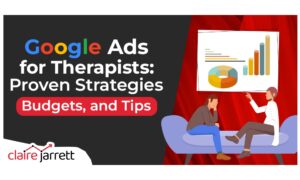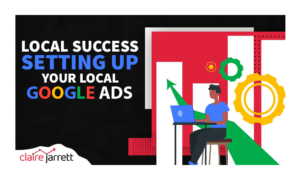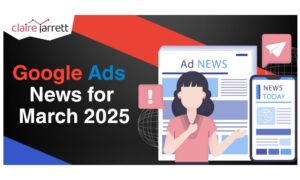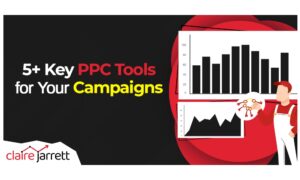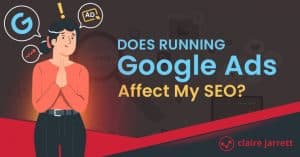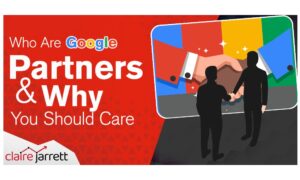Best Practices for B2B Google Ads
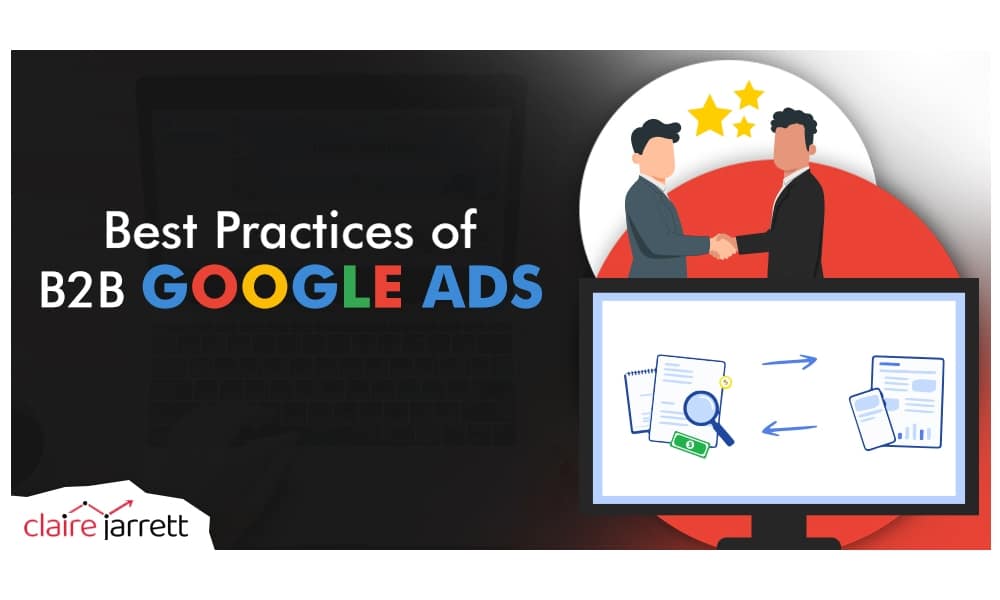
Last Updated on: 31st January 2025, 05:11 pm
If you’re in the B2B space, you know your challenges with Google Ads are often more nuanced than in B2C. You’re dealing with longer sales cycles, higher-ticket items, and audiences who need more nurturing before they even consider converting.
And while the basics are important, you have to think outside the box to see tangible results from your campaigns.
Before we jump into the thick of it, let’s quickly refresh ourselves on the basics. Consider this your quick checklist:
- You’ve heard it a thousand times, but targeting the right keywords isn’t just about throwing in high-volume terms. It’s about understanding intent.
- You can’t afford vague ad copy in B2B. Speak directly to the pain points of decision-makers and, more importantly, offer a solution.
- If you’re not tracking conversions, you’re not measuring your efforts. Install that Google Ads pixel yesterday!
Now, we’re going to dive into the advanced strategies that have taken my clients’ B2B Google Ads campaigns from good to incredible.
Your B2B Google Ads Keyword Strategy Should Be About Intent
In B2B Google Ads, intent-oriented keywords are your best friend.
Yes, you can bid on “solutions for manufacturers,” but if your target audience is specifically looking for “custom ERP solutions for manufacturers,” that’s where you need to be.
Intent-driven keywords focus on the why behind the search, not just the what.
Now, if you’re not being mindful, Google can throw your ad money at searches that aren’t relevant. That’s where keyword match types come into play.
A little tip here: always use exact match or phrase match for your highest-intent keywords, and broad match only for exploratory purposes. And don’t forget your negative keyword list – this prevents your ads from showing up in irrelevant searches, which is critical for staying budget-conscious.
Here’s another tip:
Don’t lump all your keywords into one or two ad groups, as this leads to a lack of focus. Instead, organise your ad groups by different themes or stages of the buyer’s journey.
For example, create one ad group for top-of-funnel educational searches, another for middle-of-funnel product comparisons, and a third for bottom-of-funnel purchase-ready searches. Each stage requires a different message and a different call to action.
Be Specific In Your B2B Ad Copy
Instead of using fluffy language, focus on data-driven benefits:
- How much time or money will your product or service save them?
- How will it make their business run more smoothly?
- And in how much (or how little) time should they expect to see results?
Instead of “Our software is the best”, say something like, “Save 15 hours a week with our automated project management tool.”
The more specific and quantifiable your benefit, the more likely it is to resonate with B2B buyers. Specificity sells!
Here’s a simple, yet widely used example of specificity from the following ad by MailChimp:
Not only can I get started in 5 minutes, but this solution integrates with my existing tools (critical for B2B).
The Importance of Audience Layering and Remarketing
Here’s something most people aren’t using to its full potential: Google Ads audience layering.
Yes, you’re targeting specific keywords, but are you layering that with audiences?
This is especially crucial in B2B because your audience is likely to be more niche, and combining audience and keyword targeting can fine-tune your campaigns.
Here’s how to do it:
- Go to the Audience Manager in your Google Ads dashboard and create custom audiences based on your ideal B2B buyers. Layer those audiences with your existing keyword targeting.
- On the Display Network, you can layer interest-based targeting with demographic data to get super specific about who sees your ads. For example, you might target decision-makers in specific industries who have previously visited your website.
- For the Search Network, add remarketing lists or in-market audiences to refine who sees your search ads, focusing on users with higher intent.
Let’s say you’re selling CRM software for enterprise businesses. Instead of just using CRM-related keywords, you could layer your keyword targeting with custom audiences like those who’ve visited your pricing page or based on interest categories (e.g., enterprise IT managers). This makes sure your ads appear to decision-makers and reduces irrelevant clicks from people without buying power.
Remarketing is equally critical. We know the B2B sales cycle is longer, and most people won’t convert on their first visit to your site. This is where remarketing enters the room. But we’re not just talking about standard remarketing where you show ads to anyone who’s visited your site. No, we’re going to segment your audiences to get the most out of every interaction.
Here’s how you can do it:
- High-intent visitors include people who visited your pricing page, started to fill out a form but didn’t complete it, or downloaded a case study. These are warm leads that might just need a little push. For this segment, run ads featuring testimonials, case studies, or a special offer to nudge them toward the final decision.
- Nurturing prospects are people who’ve engaged with educational content like white papers or webinars, but aren’t ready to buy yet. For this group, continue nurturing them with ads that provide additional value – like industry reports, guides, or a free consultation offer.
- Cold leads are people who may have bounced quickly from your site or haven’t shown strong intent. You don’t want to lose them, but you also don’t want to push too hard. Use re-engagement ads that focus on your value proposition without being overly salesy, like showcasing a blog post or video to spark renewed interest.
And of course, while you’re setting up your campaigns, don’t forget to exclude your existing customers – no need to waste ad spend on people who’ve already converted!
Want to take targeting up a notch? Use in-market audiences. Google tracks user behaviour across the web and identifies people who are “in-market” for specific products or services. In B2B, these might include people who are actively researching your solution.
Tighten up Your B2B Google Ads with Dayparting and Ad Scheduling
B2B decision-makers aren’t browsing Google at all hours of the day. I’ll bet that almost no one is looking for financial advice or enterprise software solutions at 2 a.m. If you’re running your ads 24/7, you’re likely wasting budget on time slots where you won’t see much conversion action.
That’s why dayparting, or ad scheduling, is a critical optimisation tool, especially for businesses like financial advisors, where your audience is most active during business hours.
So, where do you go to set this up? It’s simple:
Step into your Google Ads account, head over to your “Ad Schedule” settings (you’ll find it in the Campaign settings under “More Settings” in 2025), and adjust the hours to when your target audience is most likely to engage.
Done!
Now, ideally, you should be working with your peak performance hours. Look at your Google Analytics or CRM data. Ask yourself: When are my highest-quality leads interacting with my site?
Maybe it’s mid-morning when decision-makers are catching up on emails, or perhaps you see a surge of activity in the afternoon as they research solutions. Whatever the pattern, focus your ad spend during those peak periods.
But if you’re targeting global businesses, don’t forget international time zones!
Turning off ads outside your local hours might sound like a budget-saver, but it could mean missing out on leads from other parts of the world. So, set up separate campaigns for different regions to ensure your ads are running when your global prospects are active.
Ad Extensions: Because Why Stop at One Link?
Ad extensions like sitelinks, callouts, and structured snippets are bonus real estate on the SERP.
They give your audience multiple paths to engage with you. Whether it’s directing users to specific services via sitelinks or adding credibility through callouts, extensions improve your ad’s visibility and offer more ways for users to engage.
Take the structured snippets for example: These can list specific product categories or features that help qualify the right users before they even click.
B2B Google Ads Targeted Landing Pages for the Win
Imagine you’ve clicked on an ad that promises a “comprehensive CRM solution,” only to land on a page that doesn’t really speak to that value proposition. You’ll immediately feel disconnected – and then you will disconnect from that page.
Targeted landing pages are essential for keeping users engaged once they click through.
Each ad group should link to a page that directly reflects what you’ve promised in the ad copy. If your ad is about project management tools for IT professionals, you’d better make sure the landing page checks all boxes.
If you’ve crafted the perfect ad but your landing page doesn’t match the intent and expectation, you’re losing potential clients before you even get started.
Notice how the landing page contains exactly what the ad promised.
Conversion Tracking That Goes Beyond Form Fills
One of the biggest mistakes I see in B2B Google Ads is focusing solely on form fills or demo requests as the only conversion metric. Yes, they’re important, but in a longer sales cycle, they’re just one piece of the puzzle. To really understand the effectiveness of your campaigns, you need to track micro-conversions, too.
Here’s what I recommend tracking in addition to form fills:
- White paper or eBook downloads: Great for lead nurturing.
- Webinar sign-ups: Signals high engagement.
- Case study views: Often a last step before a prospect makes contact.
- Time spent on key pages: Gives you insight into which parts of your site are most persuasive.
Google Ads lets you set up multiple conversion actions, so take advantage of this. By tracking these smaller conversions, you’ll get a better sense of where leads are in the funnel and can optimise your campaigns the right way.
How Much Should You Spend on B2B Google Ads?
The age-old question: How much should you spend on Google Ads? It’s common to think that you need to spend loads of money upfront because it’s B2B, but that’s not quite the case.
Here’s my advice: Start small, test, and scale.
You don’t need to dive in with a massive budget right off the bat. In B2B, where the sales cycle is longer, it’s essential to gather data before ramping up your spend.
For most B2B businesses, a starting budget of $2,000 to $5,000 per month is a good baseline, especially if you run a smaller business. This allows you to run multiple ad variations, target different audience segments, and gather enough data to make informed decisions.
And remember, B2B ads tend to be more expensive than B2C because you’re often targeting more competitive and sales-driven keywords, making each click more valuable. Your ultimate closed deal value will also be higher.
But don’t let that scare you – if you’re following the strategies laid out here, you’ll get more qualified leads and see a better return on your investment!
A/B Testing for Continuous Optimisation
A/B testing or split testing is one of the practices businesses swear by…but don’t necessarily do it consistently. They run a couple of tests and then move on, thinking their job is done. In reality, A/B testing should be an ongoing process.
Here’s what I recommend:
- Start with small, incremental changes. (See, I told you that was my usual advice!) Test different headlines, descriptions, and CTA buttons. No need to test everything all at once!
- Move on to landing pages. Once you’ve optimised your ads, look at the landing pages your traffic is going to. Make sure the messages match. Whenever possible, test different designs, messaging, and offers.
- Always keep the winner. When one ad or landing page performs better, make it the control and test against it with new variations.
As for what you should be testing, a few of my go-tos are…
Dynamic Keyword Insertion in B2B Google Ads
DKI allows you to automatically update your ad text to include the exact keyword that a prospect searched for.
In B2B, using the exact search term can make the difference between a click and a pass, especially if you’re in a competitive niche. Just be sure the keywords make sense in context.
Display URLs
The display URL (the URL that appears in your ad) gives an extra layer of trust and relevance. You can tweak this URL to reinforce the message in your ad copy, such as including the product or service name, which reassures the viewer that they’re clicking on something relevant.
Price Range/Starting From
Showing a price range or “starting from” price can weed out unqualified leads right from the start. If your product or service is on the higher end, this prevents window shoppers from clicking, saving you money on unnecessary clicks. Plus, it signals transparency, which is key in building trust in longer B2B sales cycles.
The key is to never stop testing.
“Never, ever?”
Yes, you heard me right – never, ever!
In the B2B world, decision-makers, markets, and even buying behaviours change over time. What worked for you a year ago might not be as effective today. That’s why your ads need to evolve with these shifts.
Use B2B Ads to Scale Your Growth with Confidence
In B2B Google Ads, running profitable campaigns is one of two goals. The second one is to create profitable campaigns that can scale with your business as you grow.
While you may get a few high-value leads today, you’ll need a consistent stream of quality leads to fuel future growth. As your business grows, your ad spend will likely increase, and your campaigns need to keep pace without losing efficiency.
By starting with solid fundamentals and layering these advanced strategies, you can fine-tune your campaigns to deliver high-quality leads over and over again.
And if you ever feel like managing it all is overwhelming, don’t worry – there are PPC experts like me who can guide you. Whether you need training, consulting, full-on campaign management, or a best-selling blueprint for launching your first profitable campaign, don’t hesitate to seek the help you need. After all, your job is to grow your business, not to become a Google Ads expert. That’s what I’m here for!




